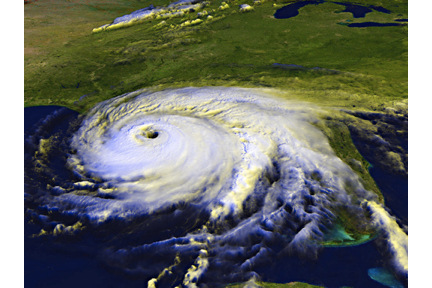

Description
Given the hazardous conditions, it is very difficult to make accurate measurements of the air-sea transfer of momentum, heat, moisture, and gases in the extremely high winds within tropical cyclones. Quantifying these air-sea fluxes are very important if accurate predictions of hurricane development and intensity are to be made. This project aims at using the data from dropsondes -- an expendable device launched from aircraft in tropical storms that measures wind speed, temperature, and humidity as it falls to the ocean surface -- to estimate surface fluxes in situations otherwise unamenable to direct measurement. Data from dropsondes provided by NOAA's Hurricane Research Division is processed and compared to laboratory measurements. In addition, simulations of hurricanes using NCAR's CM1 model are used to test the ability of surface flux retrieval via dropsondes.
- Richter, D. H., C. Wainwright, D. P. Stern, G. Bryan, and D. Chavas (2021), Potential low bias in high-wind drag coefficient inferred from dropsonde data in hurricanes, Journal of the Atmospheric Sciences, 78, pp 2339-2353
- Richter, D. H., R. Bohac, and D. P. Stern (2016), An assessment of the flux profile method for determining air-sea momentum and enthalpy fluxes from dropsonde data in tropical cyclones, Journal of the Atmospheric Sciences, 73, pp 2665-2682
- Richter, D.H. & D.P. Stern, (2014), Evidence of spray-mediated air-sea enthalpy flux within tropical cyclones, Geophysical Research Letters, 41, pp 2997-3003
For more information:
Check out the presentation given virtually by PhD student Chibueze Oguejiofor at the 2021 AGU Annual Meeting:
You can also see the presentation given virtually at the 2021 AMS Annual Meeting at the Air-Sea Interaction Conference:
Project Aims
- To estimate air-sea fluxes of heat, moisture, and momentum from dropsonde data
- Quantify the limitations of the flux-profile method for estimating surface fluxes in hurricanes
- Characterize the hurricane boundary layer through dropsonde observations and turbulence-resolving simulations
Project Information
ONR TCRI N0004-20-1-2060